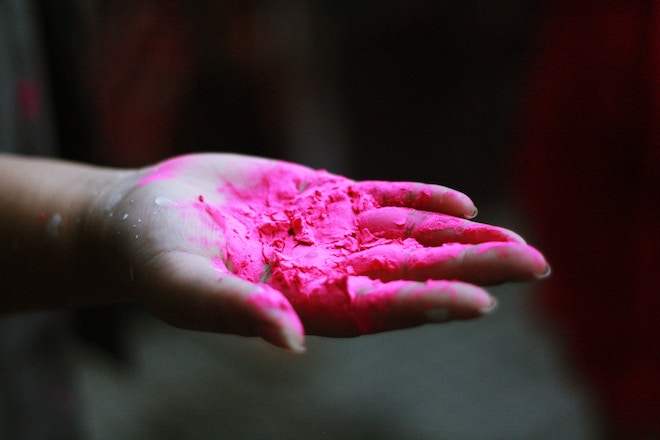Research done by the Centers for Disease Control (CDC) found that at least 1 out of every 7 children experienced neglect or abuse in the last year (although this number is believed to be much higher since so many cases of childhood abuse go unreported). It’s estimated that more than two-thirds of children go through one or more traumatic events by age 16. Trauma in childhood can stem from various adverse experiences such as abuse, violence, neglect, loss, or exploitation. These intense events can lead to significant psychological and emotional responses, impacting a child’s development and well-being.
Childhood trauma doesn’t go away just because you grow up. There can be a long-term impact on mental health, relationships, and sense of self-worth. Fortunately, knowing the symptoms of childhood trauma in adults, the effect it can have, and how to treat it can help you heal from a painful past. Keep reading to learn more about childhood trauma in adults.
Understanding Childhood Trauma
The term childhood trauma refers to disturbing and distressing occurrences of physical, sexual, or emotional abuse, neglect, and household dysfunction experienced during the formative years.
Childhood trauma can, and often does, have a profound impact on healthy emotional development and overall well-being. It’s linked to long-term consequences and increases the risk of poor mental health and substance abuse. Some research suggests that children who experience trauma are twice as likely to develop a mental health condition in the future. Childhood trauma survivors also have a higher likelihood of struggling to form and maintain healthy relationships as adults.
Signs of Childhood Trauma in Adults
Symptoms of childhood trauma in adults can manifest in many ways. They can widely vary from person to person and are often influenced by factors like the severity and duration of the traumatic experience. The type of trauma can also play a huge role in the symptoms an adult experiences later in life.
The availability of support systems — either in childhood or in adulthood — and the use of coping mechanisms can also impact how trauma shows up later in life.
Signs of childhood trauma in adults can include:
- Emotional dysregulation
- Relationship difficulties
- Self-destructive behaviors
- Chronic health issues
- Hypervigilance
Emotional and psychological signs
Emotional and psychological signs of repressed childhood trauma in adults can include persistent or uncontrollable feelings of fear, anxiety, and depression. Regulating emotions or establishing healthy attachments to others can also be challenging.
Common emotional and psychological signs of childhood trauma include:
- Flashbacks or intrusive memories: Many adults experience vivid flashbacks of the traumatic events they once experienced. These can be triggered by very specific cues or reminders of their past.
- Low self-esteem or self-blame: Adults who harbor feelings of worthlessness, shame, or self-blame due to trauma often develop a negative self-image.
- Dissociation: Some adults try to disconnect from their feelings or thoughts as a way to deal with overwhelming emotions about their abuse.
- Difficulty with trust: Adults who went through trauma in their youth might struggle with trust, fear, betrayal, or abandonment trauma, which can impair the ability to form and maintain close and meaningful relationships.
- Mood swings: Mood swings can be prevalent for adult survivors of trauma. Fluctuations in mood can range from anger to sadness to irritability to despair, often with no warning.
- Sleep disturbances: Re-experiencing traumatic memories during sleep is not uncommon. It can cause insomnia, nightmares, or other sleep disturbances.
- Hypervigilance and startle response: People who survive abuse often have a heightened sensitivity to threats, whether they’re perceived or real. This can lead to an exaggerated startle response or needing to remain in a constant state of alertness.
Behavioral signs
Behavioral signs of repressed childhood trauma in adults can include:
- Avoidance behavior: Adults with repressed memories might withdraw to avoid situations, people, or places that remind them of their trauma.
- Self-destructive behaviors: It’s common for adult survivors to engage in risky or harmful behavior — like substance abuse or self-harm — in an attempt to numb their emotional pain.
- Compulsive behaviors: Compulsive behaviors — like excessive hand washing or counting rituals — might be ways some people try to cope.
- Isolating from others: Survivors of abuse might avoid social interactions with others out of fear of harm or rejection.
- Impulsive behavior: Some adults are impulsive or engage in risky behaviors — like unsafe sexual practices.
- Disordered eating: Using food to try and cope with past trauma and regain a sense of control isn’t uncommon.
The Impact of Childhood Trauma on Adults
Childhood trauma can have profound and lasting effects on an individual’s life, shaping their adult experiences in multiple areas, especially in personal relationships and overall well-being. Understanding these impacts can help in recognizing the signs and seeking appropriate interventions.
“Our past has a great impact on how we view and interact with the world around us. We aren’t always aware of it because we are busy living our life. However, the relationships we form, how we interact with others, and how we react to situations are some ways our past experiences dictate how we deal with situations in the present.”
– Talkspace therapist Minkyung Chung, MS, LMHC
Personal relationships
Adults who experienced trauma during their childhood often face significant challenges in their personal relationships. These difficulties manifest in various forms:
- Intimacy issues: Struggling to create or maintain close and secure bonds.
- Difficulty developing and maintaining meaningful relationships: Often stemming from trust issues or a distorted perception of social cues.
- Challenges expressing emotions: Individuals may feel blocked or uncomfortable sharing their feelings.
- Interpersonal conflict: Increased likelihood of misunderstandings and conflicts in relationships.
- Anger, impulsivity, and emotional dysregulation: Unresolved trauma can lead to difficulties in managing emotions, which impacts interactions with others.
- Unhealthy attachment patterns — avoidance or clinginess: These patterns can lead to unstable relationships.
- Repeating the cycle: Without intervention, there is a risk of perpetuating the same harmful patterns learned in childhood.
These challenges significantly affect how individuals form and maintain relationships, often necessitating professional help to break the cycle and foster healthier interpersonal dynamics.
“Someone who came from an absent or neglectful family may end up seeking acceptance and belonging with others in a way that can be harmful to them. It’s not uncommon for individuals with childhood trauma to struggle with some level of mental health instability. It’s important to work through these trauma to find the right overall balance.”
– Talkspace therapist Minkyung Chung, MS, LMHC
Well-being
The repercussions of childhood trauma extend beyond interpersonal relationships, affecting the overall well-being of the individual. The psychological and physical health challenges associated with an adverse childhood experience include:
- Mental health conditions: Adults with a history of childhood trauma are more susceptible to various mental health disorders, including adult depression, anxiety, post-traumatic stress disorder (PTSD), and borderline personality disorder (BPD), with childhood abuse or trauma being a recognized risk factor.
- Physical health conditions: The ongoing stress from unresolved trauma can manifest as several physical health issues like cardiovascular disease, autoimmune disorders, chronic pain, or substance abuse.
- Self-care and grooming: Childhood trauma can leave adults lacking basic self-care skills and struggling with personal hygiene, dental care, and household management. Neglect during childhood can result in difficulties with these essential tasks, impacting their overall quality of life.
Additional struggles such as low self-esteem and difficulty functioning due to hypervigilance, dissociation, or intrusive memories further complicate the individual’s ability to lead a fulfilling life.
Addressing these issues often requires a comprehensive approach involving mental health professionals, supportive relationships, and sometimes medical intervention to manage the physical ailments linked to chronic stress.
How to Treat Childhood Trauma in Adults
Treating childhood trauma in adults is most effective when a combined approach is used. Therapy, medication, and coping techniques can all be hugely beneficial in the healing process.
Therapy
Trauma therapy can be tailored to individual needs based on the severity and duration of the traumatic experience. Some types of therapy will be more effective than others, but like any trauma treatment approach, there’s no “one” or “right” way to deal with trauma.
Commonly used forms of therapy include:
- Trauma-focused cognitive behavioral therapy (TF-CBT): Evidence-based, structured therapy that addresses the psychological impacts of repressed trauma. It helps people understand and process their experiences and teaches them to challenge associated negative beliefs.
- Eye movement desensitization and reprocessing (EMDR): A highly specialized approach to therapy that helps people process traumatic memories through bilateral stimulation like rapid eye movement, tapping, and auditory tones.
- Dialectical behavioral therapy (DBT): A comprehensive form of therapy initially developed to treat borderline personality disorder. It’s since been adapted to treat trauma using a variety of approaches.
“Treatment for childhood trauma, or trauma in general, has come a long way. It started with CBT but has evolved to other trauma-focused therapies. It is important to learn about each one and to ascertain which one might be the right fit for you. For instance, if choosing trauma-focused CBT, one would concentrate on changing negative thought patterns to positive thought and behavior patterns with an emphasis on the trauma. It is important to explore the different types of trauma therapy by talking to a therapist. They will be able to help discern the right treatment method, even if it isn’t with them.”
– Talkspace therapist Minkyung Chung, MS, LMHC
Medication
For some people, medication might be a valuable part of a trauma therapy treatment plan. Medication can help manage symptoms of childhood trauma in adults, especially when dealing with comorbid (occurring at the same time) depression, anxiety, or post-traumatic stress disorder.
Types of PTSD medication that may help survivors of trauma:
- Antidepressants
- Anti-anxiety medication
- Antipsychotics
- Mood stabilizers
Note: Medication should only be used under the advice of a qualified healthcare professional who’s assessed symptoms, medical history, and treatment goals.
Somatic therapies
Somatic therapy is an alternative approach to psychotherapy. It focuses on connecting the mind and body and recognizes that emotional experiences are stored in the body. Somatic techniques like mindfulness, deep breathing, and movement can address childhood trauma symptoms in some adults.
Types of somatic therapies to treat childhood trauma in adults include:
- Somatic Experiencing (SE)
- Sensorimotor psychotherapy
- Trauma-informed yoga
- Massage therapy
Coping strategies
Coping techniques are designed to help adults deal with childhood trauma. A combination of emotional regulation techniques, self-care practices, and therapy usually gets the best results.
Effective coping strategies for childhood trauma may include:
- Mindfulness
- Grounding techniques
- Intentional journaling
- Physical activity
- A solid support network
- Professional help
- Self-care
- Self-compassion and forgiveness
Heal from Trauma with Talkspace
If you want to get therapy from someone who understands how to treat childhood trauma in adults, Talkspace is an online platform that makes getting help convenient and affordable. Even if you’re considering medication, Talkspace offers diagnosis and medication management from qualified psychiatrists who are trained to deal with complex trauma recovery.
Connect with an online therapist at Talkspace today to start your journey and heal from your childhood trauma.
Sources:
- Fast facts: Preventing child abuse & neglect |violence prevention|injury Center|CDC. Centers for Disease Control and Prevention. April 6, 2022. Accessed April 21, 2024. https://www.cdc.gov/violenceprevention/childabuseandneglect/fastfact.html.
- Understanding child trauma. SAMHSA. Accessed April 21, 2024. https://www.samhsa.gov/child-trauma/understanding-child-trauma.
- Torjesen I. Childhood trauma doubles risk of mental health conditions. The BMJ. February 22, 2019. Accessed April 21, 2024. https://doi.org/10.1136/bmj.l854. https://www.bmj.com/content/364/bmj.l854. Accessed April 21, 2024.
- Mainali P, Rai T, Rutkofsky IH. From child abuse to developing borderline personality disorder into adulthood: Exploring the neuromorphological and epigenetic pathway. Cureus. Published online July 30, 2020. doi:10.7759/cureus.9474. https://www.ncbi.nlm.nih.gov/pmc/articles/PMC7455386/. Accessed April 21, 2024.
Talkspace articles are written by experienced mental health-wellness contributors; they are grounded in scientific research and evidence-based practices. Articles are extensively reviewed by our team of clinical experts (therapists and psychiatrists of various specialties) to ensure content is accurate and on par with current industry standards.
Our goal at Talkspace is to provide the most up-to-date, valuable, and objective information on mental health-related topics in order to help readers make informed decisions.
Articles contain trusted third-party sources that are either directly linked to in the text or listed at the bottom to take readers directly to the source.




